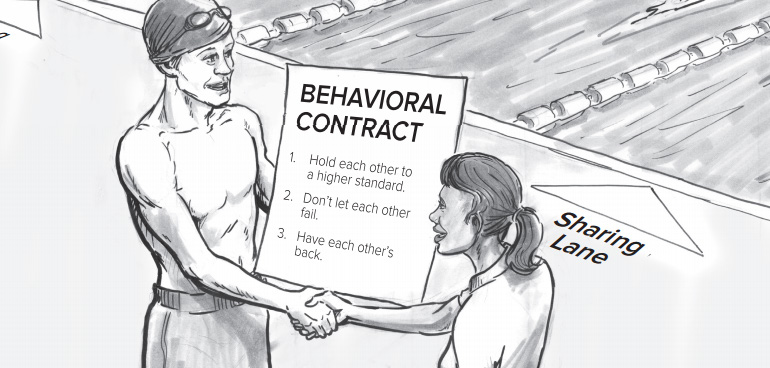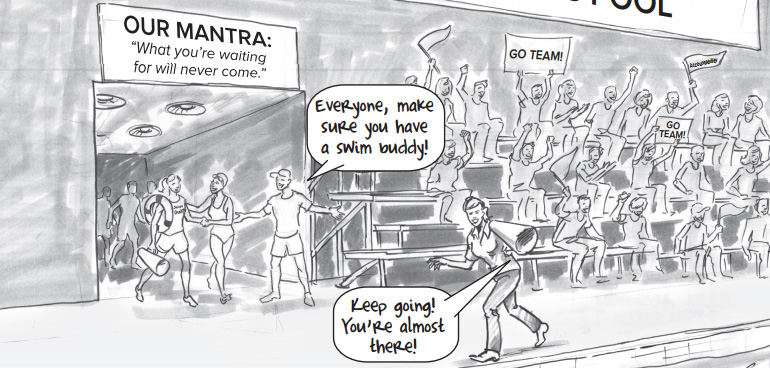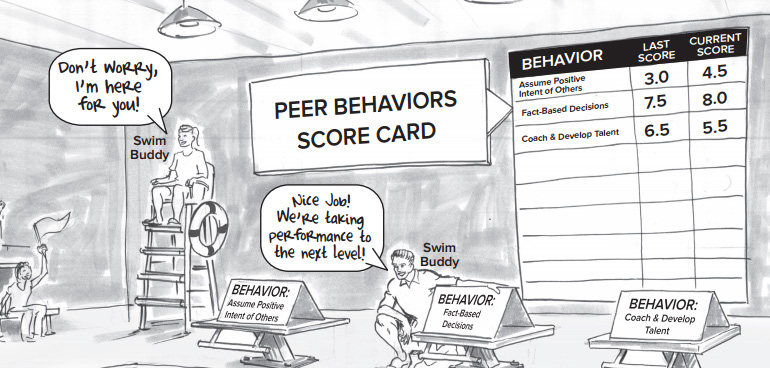Many organizations attempt to create a climate of accountability with robust performance management systems. The hope is that by building clarity and accountability into the rollout of enterprise strategies and team goals, the likelihood of achieving them will increase. Despite conscious efforts to launch new strategies with communication and goal cascading systems, most employees remain confused about the business direction and how the business targets affect them. Leaders often comment that the reason why a business isn’t growing is because it lacks accountability.
The distinction is critical, and the examples of being vested in each other’s success extend far beyond just business.
The challenge is that the word “accountability” may make you think of management enforcement. Mike Thaman, CEO of Owens Corning, makes a critical distinction between the difference of “holding someone accountable,” which has mainly negative and punitive connotations, and “creating accountability in others,” which is about being vested in the performance success of others. The distinction is critical, and the examples of being vested in each other’s success extend far beyond just business.
The power of peer accountability is often underutilized and may in fact be the ultimate performance driver. Consider the quote from Olympian and soccer great Mia Hamm, who stated, “I’ve worked too hard and too long to let anything stand in the way of my goals. I will not let my teammates down and I will not let myself down.” And LeBron James commented after his new Miami Heat team failed to win the NBA championship, “I didn’t play well. I didn’t make enough game-changing plays that I know I am capable of making, and I let my teammates down.” These are two great examples of the impact accountability has on more than just a single individual.
In story after story about heroic efforts in battle, a common theme can be found at the core of amazing accomplishments. For example, in a recent book about the wars in Afghanistan, the author observes that the troops he traveled with really had little in common. They came from different U.S. cities, had different hairstyles, liked very different music, and if they were in a core city center, would have most likely come from different gangs. Yet, on a daily basis he saw peer accountability so strong that they would willingly give their lives for each other. It was more than a bit puzzling. The commitment he saw was so strong, and the vesting in each person staying alive so pervasive, that the author was awestruck by how peer accountability and support united people to accomplish something none of them could have managed on his own.
Peer pressure, responsibility, and accountability, quite frankly, are much more efficient than any policy or system could achieve. The anxiety of not being accountable to a respected team member is a catalyst for motivating performance and building strong peer accountability. The mindset and the actions that follow from being totally vested in someone else’s success will enable mutual success. In fact, creating a culture of accountability may have little to do with bosses. It is all about peers and the commitments, relationships, and support that they provide each other – and the intense desire not to let each other down.
The power of accountability starts with behaviors. It seems that for many leaders it is easier to hold individuals accountable for results and ignore the behaviors. But since behaviors always precede results, it is critical to build new “behavioral ground rules” or “behavioral contracts” for peers to adopt to hold themselves and each other accountable.
Here are three steps to helping your team build peer accountability in executing on your most important goals.
1. Behaviors Are at the Heart of Peer Accountability
New strategies, goals, or initiatives can only be successful with new behaviors. One of the most important mantras for leaders driving performance is “What you’re waiting for will never come.” This means that leading performance in times of change can’t be intellectual for the leaders and emotional and behavioral for everyone else. Achievement and accountability are all about behavior change. The most effective way to create new team-based behavioral ground rules is for the team to identify the current team (peer) behaviors that are inconsistent with the new strategies or goals, as well as the needed behaviors for the new direction. Together the team must establish eight to ten behavioral ground rules that are critical for success. These can be general, like “Assume positive intent of others,” because distrust holds us back, or very specific, such as “Ensure that every decision for new technology passes our re-usable technology criteria.” The responsibility of each team member is to step up and stand out in holding themselves and each other accountable to these ground rules.


2. Accountability Feedback and “Swim Buddies”
One of the largest obstacles to achieving peer accountability is overcoming the hesitance to give each other immediate critical feedback. Sometimes people think it will risk their positive relationship, but ultimately, if there is a lack of long-term accountability, the positive relationships disappear anyway. When we establish the peer responsibility to call out behaviors that are exhibited and inconsistent with our new behavioral ground rules, we make it more of the expected routine for everyone. Not that it is comfortable to step into these conversations, but continuing to ignore constructive feedback will not breed a culture of accountability. It hurts the team and it hurts the teammates themselves.
The best way to frame this new peer responsibility of accountability is for team members to see themselves as “swim buddies” for each other. The swim to new behaviors is never a smooth one, and each person will go underwater at different times in pursuit of living the new behavioral ground rules. The team is there to hold you accountable, but also to make sure that nobody drowns. Because if any one person drowns, everyone does; the team just can’t let it happen.

3. Peer Behavior Scorecard
In our experience we have seen balanced scorecards, strategic scorecards, performance dashboards, KPIs, and critical metrics. All have some value when used as tools to create sustainable, profitable growth for any organization. However, when creating peer accountability and support for performance, one of the most helpful scorecards is the behavioral ground rule scorecard.

- On a scale of 1–10, where 1 is low and 10 is high, rate each ground rule on the basis of how important it is to success.
- Next, rate the team’s current performance, also on a scale of 1–10.
- Subtract the team’s performance rating from the importance rating to determine the gap.
- Re-order the behavioral ground rules, from the one with the largest gap to the one with the smallest gap.
- As a team, concentrate on the three ground rules with the largest gaps and focus with a vengeance on specific behaviors that will close the gaps most quickly.
- Re-assess individual and collective performance against the behavioral scorecard every quarter.
Accountability is a team game, and the desire not to let another team member down drives the tough and important behavior changes that truly fuel the achievement of key business outcomes and goals.






